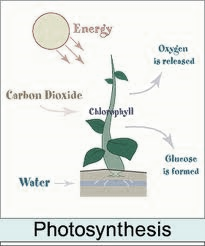Autotrophic Nutrition Definition
It is the process by which an organism produces its own food using simple inorganic materials such as water, mineral salts, and carbon dioxide, with the aid of sunlight.
What is Autotrophic Nutrition?
The term "autotrophic" is derived from "auto," meaning self, and "trophic," meaning nutrition, indicating self-nourishment. Autotrophic organisms, including green plants, contain chlorophyll, a green pigment that captures energy from the sun. Through photosynthesis, they use solar energy, water, and carbon dioxide to produce glucose, their own food source. Examples of autotrophs include blue-green algae and cyanobacteria.
Also Read: Asexual Reproduction
Photosynthesis
The synthesis of organic compounds like glucose from simple inorganic molecules like CO2 and H2O by the cells of green plants having chlorophyll in the presence of sunlight is called as photosynthesis.

Photosynthesis is the process by which plants convert solar energy into chemical energy to synthesize starch. Different parts of a plant play distinct roles in this process:
- Leaves: Considered the food factories, where photosynthesis primarily occurs.
- Stomata: Located in the lower leaf epidermis, they intake carbon dioxide from the air.
- Roots: Absorb minerals and water from the soil, transporting them throughout the plant.
- Leaves of vascular plants contain chloroplasts with chlorophyll, essential for photosynthesis. Glucose is synthesized from carbon dioxide and water in the presence of sunlight. Stomata release oxygen as a by-product during the day. The synthesized food is transported and stored in different plant parts. Green plants also synthesize proteins using nitrogen from the soil.
Also Read: Nutrition In Plants
Minerals dissolved in water are crucial for converting sugar into proteins, fats, and carbohydrates. These food components serve as energy sources for other organisms. Glucose is further converted into compounds like cellulose and starch, stored in various plant parts.
Autotroph Examples
Here are key examples of autotrophs:
- Plants
- Algae - Green algae and red algae
- Bacteria like cyanobacteria
Also Read: Respiration